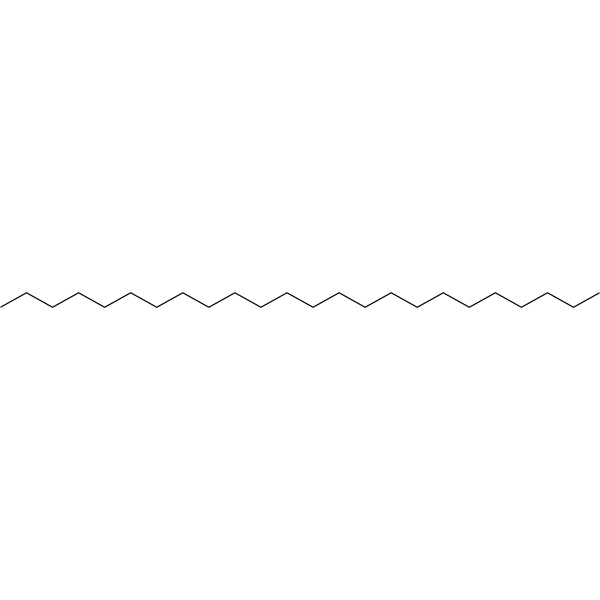
Tetracosane
CAS No. 646-31-1
Tetracosane( tetracosane )
Catalog No. M29415 CAS No. 646-31-1
Tetracosane is a natural product isolated from the Bangladeshi medicinal plant Acrostichum aureum.
Purity : >98% (HPLC)
 COA
COA
 Datasheet
Datasheet
 HNMR
HNMR
 HPLC
HPLC
 MSDS
MSDS
 Handing Instructions
Handing Instructions
| Size | Price / USD | Stock | Quantity |
| 50MG | 45 | In Stock |


|
| 100MG | Get Quote | In Stock |


|
| 200MG | Get Quote | In Stock |


|
| 500MG | Get Quote | In Stock |


|
| 1G | Get Quote | In Stock |


|
Biological Information
-
Product NameTetracosane
-
NoteResearch use only, not for human use.
-
Brief DescriptionTetracosane is a natural product isolated from the Bangladeshi medicinal plant Acrostichum aureum.
-
DescriptionTetracosane is a natural product isolated from the Bangladeshi medicinal plant Acrostichum aureum.
-
In VitroCell Cytotoxicity Assay Cell Line:HT-29, MDA-MB-231, AGS cells Concentration:0-250 μM Incubation Time:Result:Showed cytotoxicity with IC50s of 128.7, >250, >250 μM for HT-29, MDA-MB-231, AGS cells, respectively.Apoptosis Analysis Cell Line:AGS cells Concentration:500 μg/mL Incubation Time:24, 48 h Result:Induced apoptosis with the late apoptosis rate of 10% at 24 h and increased to 20% at 48 h.
-
In Vivo——
-
Synonymstetracosane
-
PathwayOthers
-
TargetOther Targets
-
Recptor——
-
Research Area——
-
Indication——
Chemical Information
-
CAS Number646-31-1
-
Formula Weight338.664
-
Molecular FormulaC24H50
-
Purity>98% (HPLC)
-
Solubility——
-
SMILESCCCCCCCCCCCCCCCCCCCCCCCC
-
Chemical Name——
Shipping & Storage Information
-
Storage(-20℃)
-
ShippingWith Ice Pack
-
Stability≥ 2 years
Reference
molnova catalog



related products
-
Cyclo(Tyr-Phe)
Cyclo-(Phe-Tyr) shows anticoagulant activities.
-
BAY-3827 B
BAY-3827 is a potent and selective AMPK inhibitor with potential antitumor activity, demonstrating antiproliferative effects in an androgen-dependent prostate cancer model and inhibiting the phosphorylation of acetyl CoA carboxylase 1 (ACC-1).
-
N-Formyl-Met-Leu-Phe...
N-Formyl-Met-Leu-Phe-Lys (fMLFK) is a peptide, acts as a potent and selective agonist of FPR1, with EC50s of 3.5 nM, 6.7 μM and 0.88 μM for FPR1, FPR2 and FPR2-D2817.32G, respectively.



 Cart
Cart
 sales@molnova.com
sales@molnova.com


